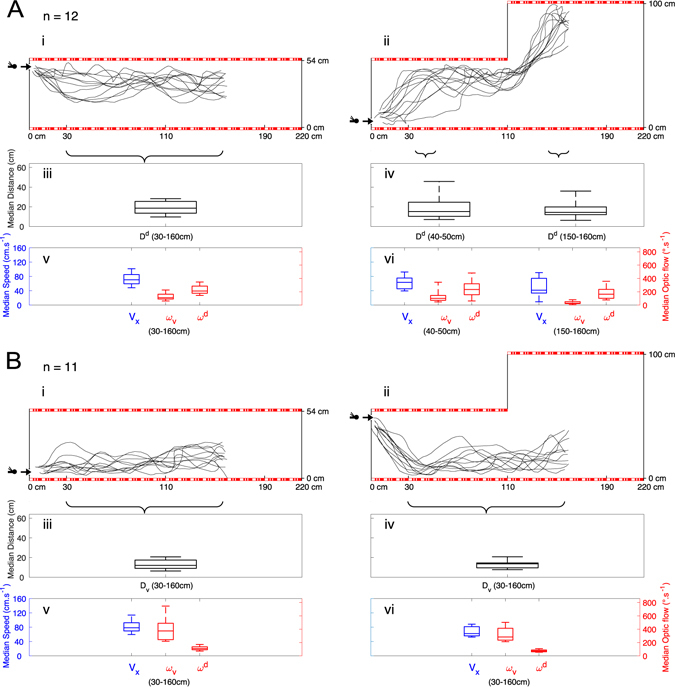Figure 2.

Step 0: E Top → R Top; Step i: E Top; Step ii: E Bottom. (A) Trajectories of honeybees (n = 12) trained to enter the tunnel via the upper entrance before being released again via the upper entrance under low-roof conditions, as described in i and then released via the low entrance under “dorsal ditch” conditions, as described in ii. In the flight performed under “dorsal ditch” conditions which they had not previously experienced, the honeybees flew upward from the low entrance and followed the low roof and then continued to follow the newly encountered higher roof at an median distance D d (see boxplots in iii and iv) which did not differ significantly from previous condition. Distributions of median speed v x and median dorsal optic flows ω d (see boxplots in v and vi) were also not significantly different each others, when the ascent speed is low. (B) Step 0: E Bottom → R Bottom; Steps i&ii: E Top. Trajectories of honeybees (n = 11) trained to enter the tunnel via the lower entrance before being released again via the lower entrance under low-roof conditions, as described in i and then via the upper entrance under “dorsal ditch” conditions, as described in ii. In the flight performed under “dorsal ditch” conditions which had not been previously experienced, the honeybees immediately descended and followed the floor regardless of the presence of the dorsal ditch, at median distances D v (see boxplots in iii and iv) which did not significantly differ from that recorded under low-roof conditions. Distributions of median speed v x and median ventral optic flow ω v (see boxplots in v and vi) were also not significantly different each others. (See statistics in results and discussion sections.).
